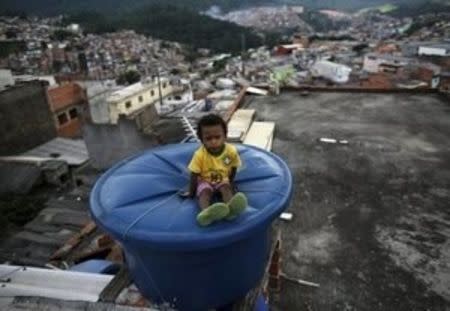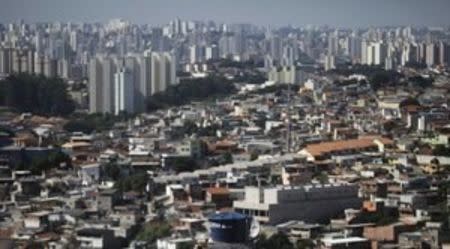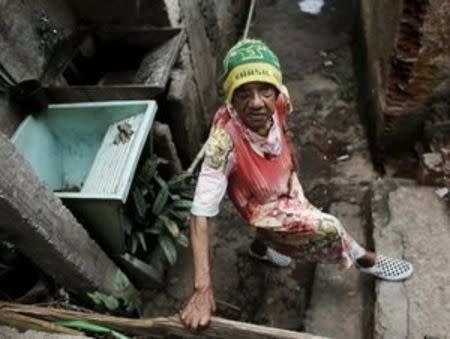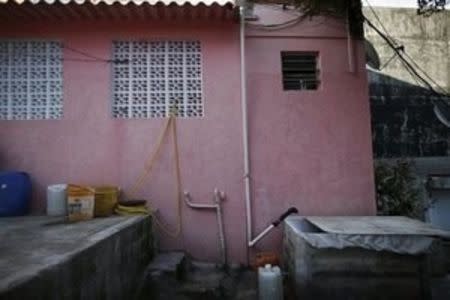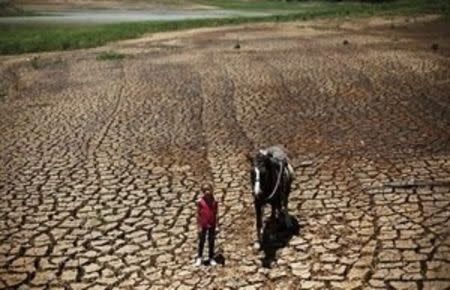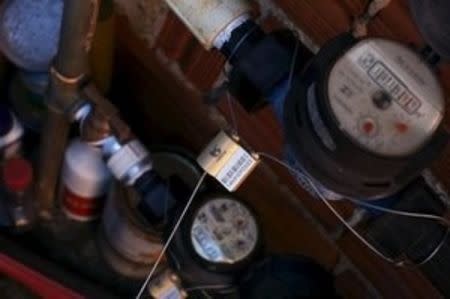Drought ends in Brazil's Sao Paulo but future still uncertain
By Caroline Stauffer SAO PAULO (Reuters) - Water levels at the main reservoir in Brazil's largest city of Sao Paulo have more than doubled since the El Niño climate phenomenon ended a two-year drought, although industrialists and activists warn fresh shortages may be just a matter of time. Sufficient rains since late last year have eliminated fears of imminent water rationing but companies and activists say Brazil's most populous region missed an opportunity to shield the population from future droughts by curbing consumption and improving efficiency. The epic drought caused panic in South America's largest city. Crimped farm and factory output threatened an ailing economy while residents hoarding rain water in canisters spurred an outbreak of mosquito-borne dengue and possibly the more recent scare of Zika. Utility Sabesp, owned by Sao Paulo state, is piping in water from other reservoirs and is keeping pump pressure low in the morning, leaving some residents with dry taps. It also is considering higher fees for industry to fund infrastructure investments. But industries, which use 30 percent of Sao Paulo's water, are turning to private wells, recycling water and capturing rainwater to avoid relying on the network, according to Anicia Pio, head of Sao Paulo state industry association Fiesp's environmental department. "Industry works on the mid- to long-term ... We do not believe (Sabesp's) actions are sufficient to achieve water security," she said. "This is cyclical. It happened in 2004, it happened in 2014. We don't have a crystal ball to know when it might happen again." Chemical firm Rhodia, controlled by Belgium's Solvay, was forced to halt some factories in 2014 due to low river levels. Rationing in interior Sao Paulo forced the world's largest beef producer, JBS SA, to furlough 800 workers. Rains brought relief late last year and water in Sao Paulo's largest reservoir, Cantareira, which provides for nearly 6 million people, rose above pump level for the first time in a year and a half. Sabesp therefore no longer has to rely on muddy technical reserves to supply South America's business hub. Restrictions on irrigation were lifted in November and record sugarcane and coffee crops in the southeast are forecast this year. With above-average rainfall in January, water levels in Cantareira have more than doubled from 20 percent capacity on Dec. 1 to 48.6 percent on Thursday. DROUGHTS MORE LIKELY But the state that accounts for one-third of Brazil's economy remains vulnerable to a new crisis because of several factors. Water or energy rationing is considered a long-term risk in a country that relies mostly on hydro-power for electricity. Sao Paulo, a metropolitan area of 20 million people, was criticized by U.N. experts for losing 31 percent of its treated water to leaks and theft, compared to an average 16 percent in the United States. That is still below the 40 percent national average in Brazil. Home to the world's largest fresh water supply, Brazil has not previously had much reason for conservation. Now, climate experts say droughts and other extreme weather are more likely because of climate change, pollution and deforestation of Brazil's Atlantic and Amazon rain forests. "We need to prepare ourselves for more drastic situations," said Samuel Barrêto, manager of water strategy at the non-profit The Nature Conservancy in Sao Paulo. "We must learn to use water in a more rational, intelligent way." Water consumption in greater Sao Paulo fell 30 percent in February 2015 compared to the previous year due in part to discounts Sabesp offered to consumers who reduced water use, but by early February 2016 were up 18 percent over the previous year. Some say Sao Paulo does not efficiently access the water it has. Geologists like Ricardo Hirata of the University of Sao Paulo recommend tapping more ground water, noting Brazilian engineers are focused on rivers and above-ground reservoirs. Activists also run a Facebook group called "Water Exists in SP," arguing that polluted rivers and lakes could be cleaned and included in the potable water supply. Sabesp said 34 measures it enacted during the crisis, ranging from improved pumping capacity to adding new rivers to the water supply, helped Sao Paulo avoid rationing. A massive 2.2 billion reais ($550 million) project is under way, known as Sao Lourenço and scheduled for completion in October 2017. It would pipe in water to metropolitan Sao Paulo from the municipality of Ibiuna, 83 kilometers (52 miles) away. But Barrêto said all these projects likely will be irrelevant in 10 or 15 years without cutting consumption in agriculture, industry and households. He urged more sustainable measures such as reforesting the banks of reservoirs. Melbourne, Australia, lived through one of the worst dry spells on record, the so-called Millennium Drought, in the 2000s and then slashed per capita water use by half and installed desalinization and recycling plants. "That's the opportunity we have," Barrêto said. (Reporting by Caroline Stauffer; Editing by Brad Brooks and Bill Trott)

